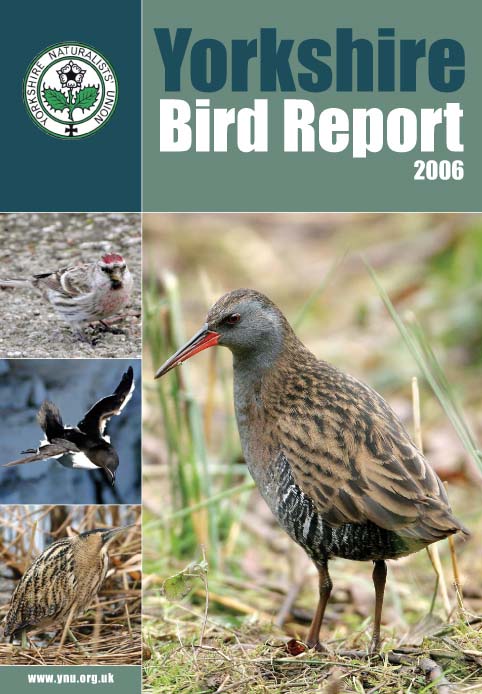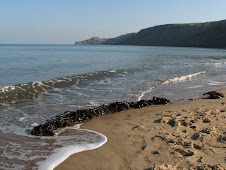Perfect or pants?
 Feeding scrum
Feeding scrumThe thing with seawatching is you can never really tell how it's going to be. At least this morning there was a bit of wind, the westerly with a smidgeon of north again, and there was cloud out at sea. But I wasn't hopeful. I got there at 06:30 and could hear terns straight away. Struggling to get set up as the remains of the presumed roost headed off north-east out into the North Sea. Most of these 40 or so terns looked like Commons but I heard Sandwich, the only ones of the watch. There were a lot of gulls hanging around, but it was low tide so that's not unusual. During this confusion an interesting wader went east and landed on the most distant low-tide-rock but I chose to ignore it (now ticked as Sharp-tailed Sand of course). Then it started; Little Gulls. I couldn't find my tally counter so I counted, that meant the tern counts were a bit awry, but to be honest they were all coming back west and then more going east and then 200 out in a distant (very, very distant) feeding frenzy so they were uncountable anyway. After 2 hours I was nearly to 400 Little Gulls.
The other main event of the watch was the feeding frenzies. The large gulls inshore were regularly going mad, flying from one place to another. I'm guessing the mackerel were in and were driving the small fish (sandeels maybe) inshore. There were 200 Gannets a way out going beserk and the afore mentioned terns. As the watch went on more Common Terns with the occasional Arctic joined in the inshore madness and the skuas came.
So whilst the Little Gulls represented the only real movers there was a load going on. The mystery wader was most likely a Knot as 1 and then 2 of those appeared on the rocks below. Whimbrel was heard.
Now this diver went by close in. The trouble with divers in close is whilst you can see them well the view is brief. This thing looked like a summer plumage Black-throat, it had the jizz of a Black-throat, the feet, the slow wing beat, held its head right and the bill looked ok but it lacked the pale mantle patches. So in the end I made a sp of it. If anyone has knowledge of diver moult and can tell me that they can moult out the patches first ..... I'm not that familiar with Black-throat, they are really not very common off this coast (this far south at any rate) - I might be prepared to reinstate it. There were a few Red-throated Divers, 4 Eider went west, there was a distant Bonxie and about 15 Arctic Skuas (they were coming back and forth). Last of all a really close Manx.
There really were a stack of auks today, close in, probably about 1,000. I thought 4:1 Razor:Guillemot. These were all diving and going mad as well.
There was passerine movement with 10 sets of mepit calls, 3 Alba Wag and a Grey Wag. So all in all a good do - not perfect but certainly not pants.
(Now 7,114 Great Shearwaters, + quality supporting cast, that's perfect.) But as in my seawatching life I've seen two huge large shearwater movements (off Ireland admittedly) I shouldn't be greedy - just seriously envious.
The other main event of the watch was the feeding frenzies. The large gulls inshore were regularly going mad, flying from one place to another. I'm guessing the mackerel were in and were driving the small fish (sandeels maybe) inshore. There were 200 Gannets a way out going beserk and the afore mentioned terns. As the watch went on more Common Terns with the occasional Arctic joined in the inshore madness and the skuas came.
So whilst the Little Gulls represented the only real movers there was a load going on. The mystery wader was most likely a Knot as 1 and then 2 of those appeared on the rocks below. Whimbrel was heard.
Now this diver went by close in. The trouble with divers in close is whilst you can see them well the view is brief. This thing looked like a summer plumage Black-throat, it had the jizz of a Black-throat, the feet, the slow wing beat, held its head right and the bill looked ok but it lacked the pale mantle patches. So in the end I made a sp of it. If anyone has knowledge of diver moult and can tell me that they can moult out the patches first ..... I'm not that familiar with Black-throat, they are really not very common off this coast (this far south at any rate) - I might be prepared to reinstate it. There were a few Red-throated Divers, 4 Eider went west, there was a distant Bonxie and about 15 Arctic Skuas (they were coming back and forth). Last of all a really close Manx.
There really were a stack of auks today, close in, probably about 1,000. I thought 4:1 Razor:Guillemot. These were all diving and going mad as well.
There was passerine movement with 10 sets of mepit calls, 3 Alba Wag and a Grey Wag. So all in all a good do - not perfect but certainly not pants.
(Now 7,114 Great Shearwaters, + quality supporting cast, that's perfect.) But as in my seawatching life I've seen two huge large shearwater movements (off Ireland admittedly) I shouldn't be greedy - just seriously envious.












2 comments:
Al, BT Divers are not common up here in Nortumbs either but they are 'seen' all the time either offshore or fly by's. In my book they rank as the most mis id'd bird inmy county! I certainly don't get them every year despite many hours gazing east.
Stewart,
I agree, I've sat with folk as they mis id them or at least call them when they shouldn't - thus my caution. In my youth I used to watch at Dungeness and we went from sp-ing many to id-ing nearly all then back to sp-ing. There was many a discussion - of course at Dunge seawatching in the morning is all silhouette but regardless I think they're hard. I'll have a look in BWP when I get a mo but it will remain a sp regardless - I suspect that adults moult the pale mantle patches out in early autumn - but I might be entirely wrong.
Post a Comment